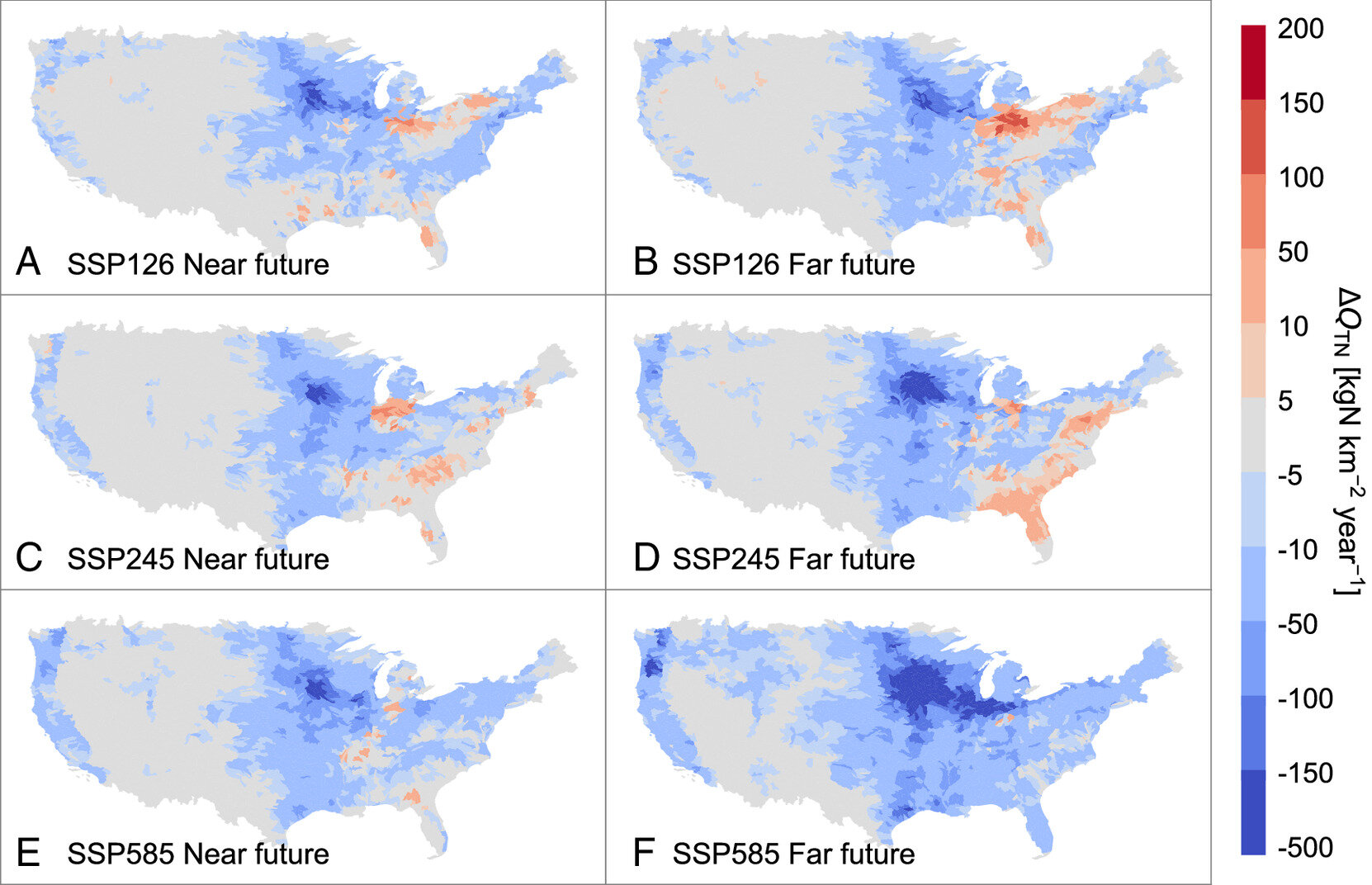As climate change progresses, rising temperatures may have a greater impact on nitrogen runoff from land to lakes and streams compared to projected increases in total and extreme precipitation for most of the continental United States, according to new research from a team of Carnegie climate scientists led by Gang Zhao and Anna Michalak published in the Proceedings of the National Academy of Sciences.
The conditions predicted by these findings are opposite to recent decades, in which increasing precipitation has exceeded warming and resulted in more aquatic nitrogen pollution. Understanding the relative roles of changes in temperature and rainfall is crucial for designing water quality management strategies that can withstand climate change while ensuring sustainable food and water supplies.
Human activity has completely altered how nitrogen moves through the planet’s aquatic, terrestrial, and atmospheric systems. Nitrogen from fertilizer washes into waterways, and in excessive amounts, can lead to toxin-producing algal blooms or low-oxygen dead zones called hypoxia. Over the past several summers, large algal blooms in lake and coastal regions across the United States have received extensive news coverage.
Carnegie’s Anna Michalak and her team have spent the last decade studying how climate change will affect nitrogen runoff and the subsequent risks to water quality. One of the major questions for those working to understand and prevent serious water quality impairments is the balance between the effects of temperature and precipitation changes on nitrogen pollution in vulnerable waterways.
“The complex soil and aquatic systems through which nitrogen travels, the chemical transformations it undergoes along the way, and the various ways in which changes in temperature and precipitation will affect these processes make nutrient management a significant challenge,” Zhao explained.
2023-08-09 00:48:03
Article from phys.org




















